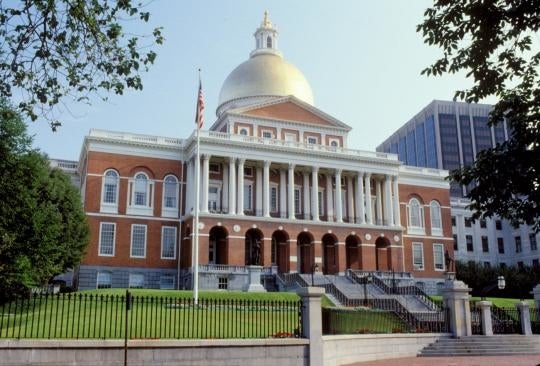State saving taxpayer dollars at record pace
 Photo | Courtesy of Commonwealth of Massachusetts
Massachusetts State House
Photo | Courtesy of Commonwealth of Massachusetts
Massachusetts State House
Massachusetts almost doubled the amount of money it keeps stashed away for an economic downturn in fiscal year 2019, boosting the state's stabilization fund more than $1 billion beyond its previous record high balance.
During fiscal year 2019, which ended June 30, 2019, the fund's balance grew by $1.423 billion -- from $2.001 billion to $3.424 billion, an increase of 71 percent that brought the fund to a record high, the comptroller's office reported Monday.
The first $764 million that went into the rainy day fund in fiscal 2019 stemmed from above-threshold capital gains tax revenue, Comptroller Andrew Maylor's office wrote in the Statutory Basis Financial Report issued Monday. The fund also got $593 million from the fiscal 2019 surplus, $53 million in investment income, $10 million from casino gaming tax revenue and fines, and $4 million from abandoned property collection in fiscal 2019.
Massachusetts now has the fourth-largest rainy day reserve in the country and the stabilization fund has never been larger -- its previous high balance was $2.343 billion in fiscal year 2007. The current balance is equal to about 11 percent of the state's annual general fund expenditures compared to a national median of 7.6 percent, the comptroller's office said.
Economists have said they expect state tax collection growth to slow down in fiscal 2021, and collections midway through fiscal 2020 are up by 4.7 percent. The fiscal 2020 budget, enacted in July, "assumes that a deposit of more than $521 million will be made" to the stabilization fund from above-threshold capital gains tax revenue during the current fiscal year, which would put the account's balance just shy of $4 billion.
In the same financial report, Maylor's office reported that the number of state employees increased by the equivalent of 744 full-time positions in fiscal year 2019 to a total state workforce of 86,120 full-time jobs. Maylor's office said the largest increase last year came at the University of Massachusetts, which added the equivalent of 456 full-time jobs.









0 Comments